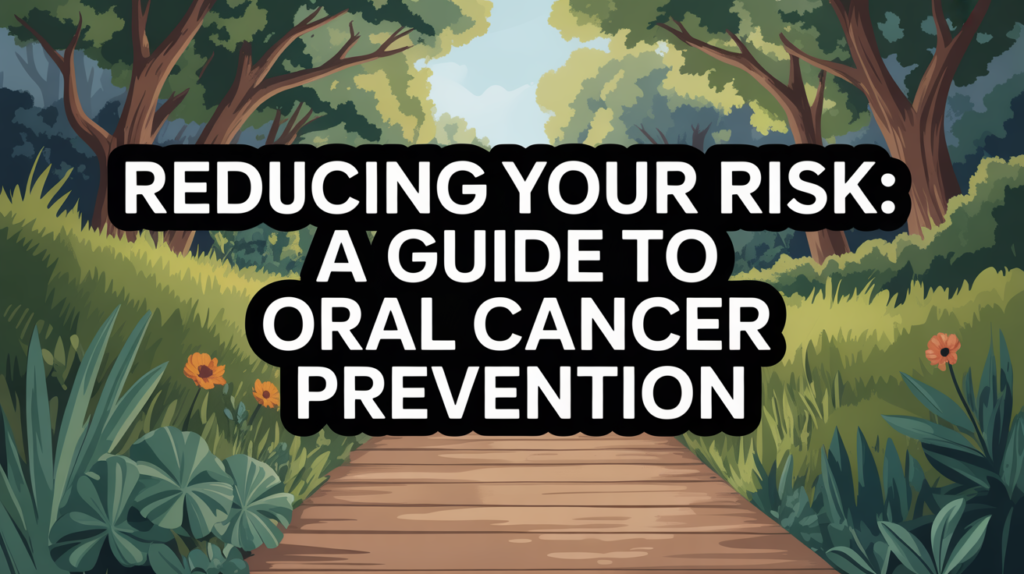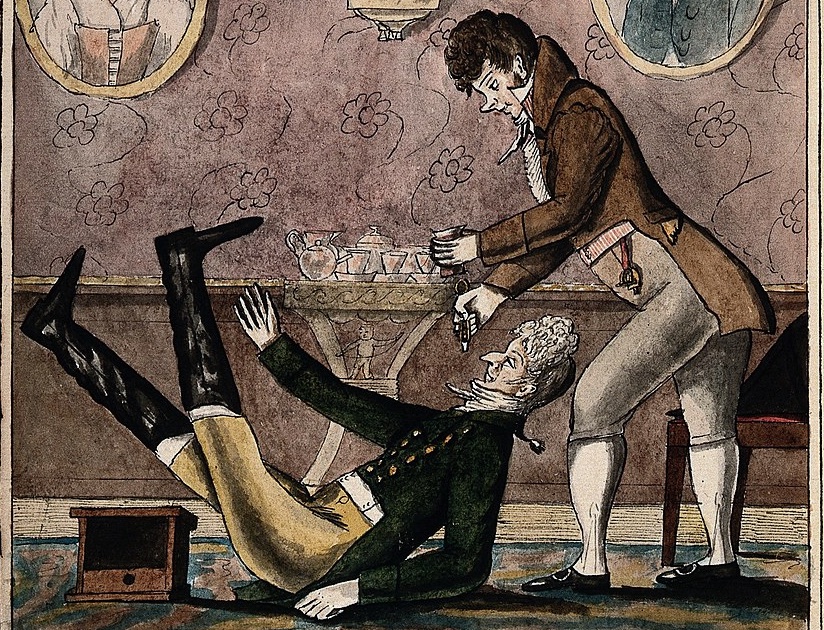Reducing Your Risk: A Guide to Oral Cancer Prevention
Introduction
Oral cancer may not always be in the spotlight, but it’s a serious health concern affecting thousands of people every year. According to recent statistics, oral cancer accounts for roughly 3% of all cancers diagnosed annually 😔. While this might seem low, the impact is significant because it often goes undetected until later stages. Early prevention and awareness can make a world of difference in protecting yourself and your loved ones.
In this guide, we’ll explore what oral cancer is, its risk factors, and most importantly, how you can reduce your chances of developing it. From lifestyle changes to regular screenings, you’ll learn practical steps to safeguard your oral health. By the end, you’ll have actionable tips to take control of your well-being. Let’s dive in! 🌟
Understanding Oral Cancer: What Is It?
Oral cancer refers to cancers that develop in the mouth or throat, including areas like the tongue, gums, cheeks, lips, and the oropharynx (the back of the throat). These cancers typically start in the squamous cells lining the mouth and throat, making them highly invasive if not caught early. Unfortunately, oral cancer has a relatively low survival rate when diagnosed at advanced stages, which underscores the importance of prevention and early detection 🩺.
While oral cancer isn’t as common as other forms of cancer, its prevalence is on the rise, especially among younger individuals due to factors like HPV infections. Survival rates improve dramatically with early intervention, so understanding the basics of this disease is key to staying ahead of the curve 👍.
Key Risk Factors for Oral Cancer
The causes of oral cancer are multifaceted, but certain behaviors and conditions significantly increase your risk. Tobacco use-whether smoked or chewed-is one of the biggest culprits, responsible for a large percentage of oral cancer cases. Alcohol consumption also plays a major role, especially when combined with tobacco. This deadly duo creates a synergistic effect that multiplies the risk 🚭🍷.
Beyond tobacco and alcohol, human papillomavirus (HPV) has emerged as a leading cause of oropharyngeal cancers. Some individuals may also have a genetic predisposition to oral cancer, while others face risks due to poor oral hygiene or chronic inflammation. Emerging research even points to the oral microbiome-the community of bacteria in your mouth-as a potential factor worth exploring 🔬.
Other lesser-known contributors include prolonged sun exposure (which can lead to lip cancer), ill-fitting dentures causing trauma, and nutritional deficiencies. Understanding these risks helps paint a clearer picture of how lifestyle choices intersect with biology. Now let’s zoom in on two of the most preventable causes: tobacco and alcohol 🕵️♂️.
“Tobacco use remains the single most important and preventable cause of this disease.” -Oral Cancer Foundation
Tobacco and Alcohol: The Leading Preventable Causes
Tobacco remains the number one preventable cause of oral cancer worldwide. Whether smoked, chewed, or inhaled, tobacco introduces harmful carcinogens into the body that damage DNA and promote tumor growth. Alcohol acts similarly by irritating oral tissues and impairing the body’s ability to repair itself. Together, they create a perfect storm for cancer development 🌪️.
The good news? Quitting tobacco and moderating alcohol intake can drastically lower your risk over time. Studies show that former smokers see a steady decline in their oral cancer risk after cessation, proving it’s never too late to make healthier choices. If you’re struggling to quit, seek support from healthcare providers who can offer resources and guidance 💪.
The Importance of HPV and Vaccination
Human papillomavirus (HPV) is now recognized as a major driver of oropharyngeal cancers, particularly among younger adults. Certain strains of HPV, notably HPV-16, are linked to nearly 70% of these cases. Unlike tobacco-related cancers, HPV-associated cancers often occur in otherwise healthy individuals, making vaccination crucial for prevention 💉.
“Risk for current smokers ranges from fourfold to fivefold for oral cavity, oropharyngeal, and hypopharyngeal cancers to tenfold for laryngeal cancers.” -National Cancer Institute
Fortunately, the HPV vaccine offers robust protection against high-risk strains of the virus. Recommended for both boys and girls starting at age 11 or 12, the vaccine not only reduces cervical cancer risk but also shields against oral and throat cancers. If you haven’t been vaccinated yet, talk to your doctor about whether it’s right for you-it could save your life! 🙌
Oral Hygiene and Microbiome Health
Maintaining excellent oral hygiene isn’t just about having fresh breath; it’s a critical step in preventing oral cancer. Poor dental care can lead to gum disease, chronic infections, and inflammation-all of which create an environment ripe for cancerous changes. Brushing twice daily, flossing, and visiting the dentist regularly are simple yet powerful ways to protect yourself 🦷✨.
Emerging research suggests that the oral microbiome-the collection of bacteria living in your mouth-may influence cancer risk. Probiotics, which promote a balanced microbiome, are being studied for their potential anti-cancer effects. While more evidence is needed, taking care of your oral ecosystem through proper hygiene and diet is a smart move for overall health 🌱.
“Human-papillomavirus (HPV) infection is a recognized risk factor for oropharyngeal cancer and most HPV-related cancers can be prevented through HPV vaccination.” -Journal of Dental Hygiene
Diet, Nutrition, and Oral Cancer Prevention
A balanced diet rich in fruits and vegetables provides essential vitamins and antioxidants that help combat cellular damage. Foods like leafy greens, berries, and citrus fruits are packed with nutrients that support immune function and reduce inflammation. On the flip side, diets low in fresh produce or high in processed foods may increase cancer risk 🥗🍓.
While less established, some studies suggest links between excessive mouthwash use and oral cancer. However, these findings remain inconclusive. For now, focus on eating colorful, nutrient-dense meals and limiting sugary snacks. Small dietary tweaks can go a long way in keeping your mouth-and body-healthy 🍎💪.
Genetics and Other Less Common Risk Factors
While lifestyle choices play a dominant role, genetics can sometimes tip the scales toward oral cancer. Individuals with a family history of the disease may inherit traits that make them more susceptible. Chronic inflammation, whether from gum disease or other sources, is another overlooked factor that can pave the way for cancer development 🔬.
“There are accumulating evidence to indicate a higher incidence of oral cancer in patients with poor oral hygiene…consuming the probiotics significantly reduces Streptococcus mutans counts which prevents tooth decay, improves periodontitis, and is effective for the treatment of oral candidiasis.” -PMC
Less common risks include prolonged irritation from jagged teeth or poorly fitting dentures, which can repeatedly traumatize oral tissues. Addressing these issues promptly can minimize unnecessary harm. While genetic predispositions can’t be changed, managing modifiable factors puts you firmly in control of your health 🧬.
Regular Screening and Early Detection
Early detection is a game-changer when it comes to oral cancer. Regular self-exams allow you to spot warning signs like unusual sores, lumps, or patches of discolored tissue. During professional cleanings, dentists perform thorough screenings to catch abnormalities early, often before symptoms appear 👀.
An oral cancer screening typically involves a visual and tactile examination of the mouth, neck, and throat. Don’t hesitate to ask your dentist about this during routine visits-it’s quick, painless, and potentially life-saving. Staying vigilant ensures any issues are addressed swiftly, improving outcomes significantly 🏥.
“The HPV vaccines are able to prevent HPV acquisition and, to date, three types of vaccines…are available and recommended for both females and males.” -PMC
Special Considerations: Age, Gender, and Ethnicity
Oral cancer risk varies across demographics, with older adults, men, and certain ethnic groups facing higher odds. Men are twice as likely as women to develop the disease, partly due to higher rates of tobacco and alcohol use. Additionally, African American men experience disproportionately high mortality rates, highlighting disparities in access to care and prevention 📊.
Younger populations aren’t immune either, thanks to rising HPV-related cases. Tailoring prevention strategies to address these differences is vital. For example, targeted education campaigns can empower underserved communities to adopt healthier habits and seek timely screenings 🌍.
Lifestyle Changes for Risk Reduction
Making conscious lifestyle changes is one of the best ways to slash your oral cancer risk. Kicking tobacco and cutting back on alcohol top the list, but don’t stop there. Practicing safe sex to reduce HPV transmission, maintaining a nutritious diet, and prioritizing oral hygiene form a solid foundation for prevention 🛡️.
“Dental hygienists must be diligent regarding routine extra and intraoral examinations and patient intake inquiries…as these measures are critical for timely referral, diagnosis, and treatment.” -Journal of Dental Hygiene
Managing stress and avoiding excessive sun exposure (especially on your lips) round out a holistic approach to risk reduction. Remember, small, consistent actions add up over time. Start today by choosing one area to improve-you’ve got this! 🌞
Partnering with Healthcare Providers
Building a strong relationship with your dentist and primary care provider is invaluable for oral cancer prevention. They can assess your unique risk profile, recommend personalized strategies, and keep you informed about advancements in screening and treatment. Open communication fosters trust and empowers you to take charge of your health 🤝.
Myths and Misconceptions About Oral Cancer
There’s no shortage of myths surrounding oral cancer, but separating fact from fiction is crucial. One common misconception is that only smokers get oral cancer, which overlooks the growing number of non-smokers affected by HPV-related cases. Another myth claims that using mouthwash excessively causes cancer-a claim not supported by conclusive evidence 🤔.
Dispelling these myths allows us to focus on proven prevention methods rather than chasing unfounded fears. Knowledge truly is power when it comes to protecting yourself against oral cancer 💡.
Frequently Asked Questions (FAQ)
What are early signs and symptoms of oral cancer?
Early signs include persistent sores, white or red patches, lumps, difficulty swallowing, and unexplained pain in the mouth or throat. Pay attention to anything unusual that doesn’t heal within two weeks and consult a professional ASAP ⚠️.
Is oral cancer preventable?
Yes, many cases of oral cancer are preventable through lifestyle modifications like quitting tobacco, moderating alcohol, getting vaccinated against HPV, and practicing good oral hygiene. Prevention starts with awareness and action 🛠️.
How often should I have an oral cancer screening?
Experts recommend annual screenings during routine dental visits. Self-checks monthly can supplement professional exams and help you stay proactive about your oral health 🗓️.
Does the HPV vaccine protect against oral cancer?
Absolutely! The HPV vaccine protects against high-risk strains like HPV-16, significantly lowering the risk of developing HPV-related oral and throat cancers. It’s a safe and effective preventive measure ✅.
Are there natural or home remedies that reduce risk?
While no single remedy guarantees protection, adopting a healthy lifestyle-eating nutrient-rich foods, exercising, and avoiding known risk factors-can naturally bolster your defenses. Supplements should complement, not replace, a balanced diet and medical advice 🌿.
Conclusion
Preventing oral cancer requires a combination of awareness, action, and partnership with healthcare professionals. By addressing major risk factors like tobacco, alcohol, and HPV, you’re already taking huge strides toward safeguarding your future. Regular screenings and maintaining good oral hygiene further enhance your protection 💖.
Now’s the time to assess your habits, make necessary changes, and schedule that overdue dental appointment. Share what you’ve learned with friends and family-it could inspire someone else to prioritize their health too. Together, we can spread knowledge and reduce the burden of oral cancer one step at a time 🚀.



